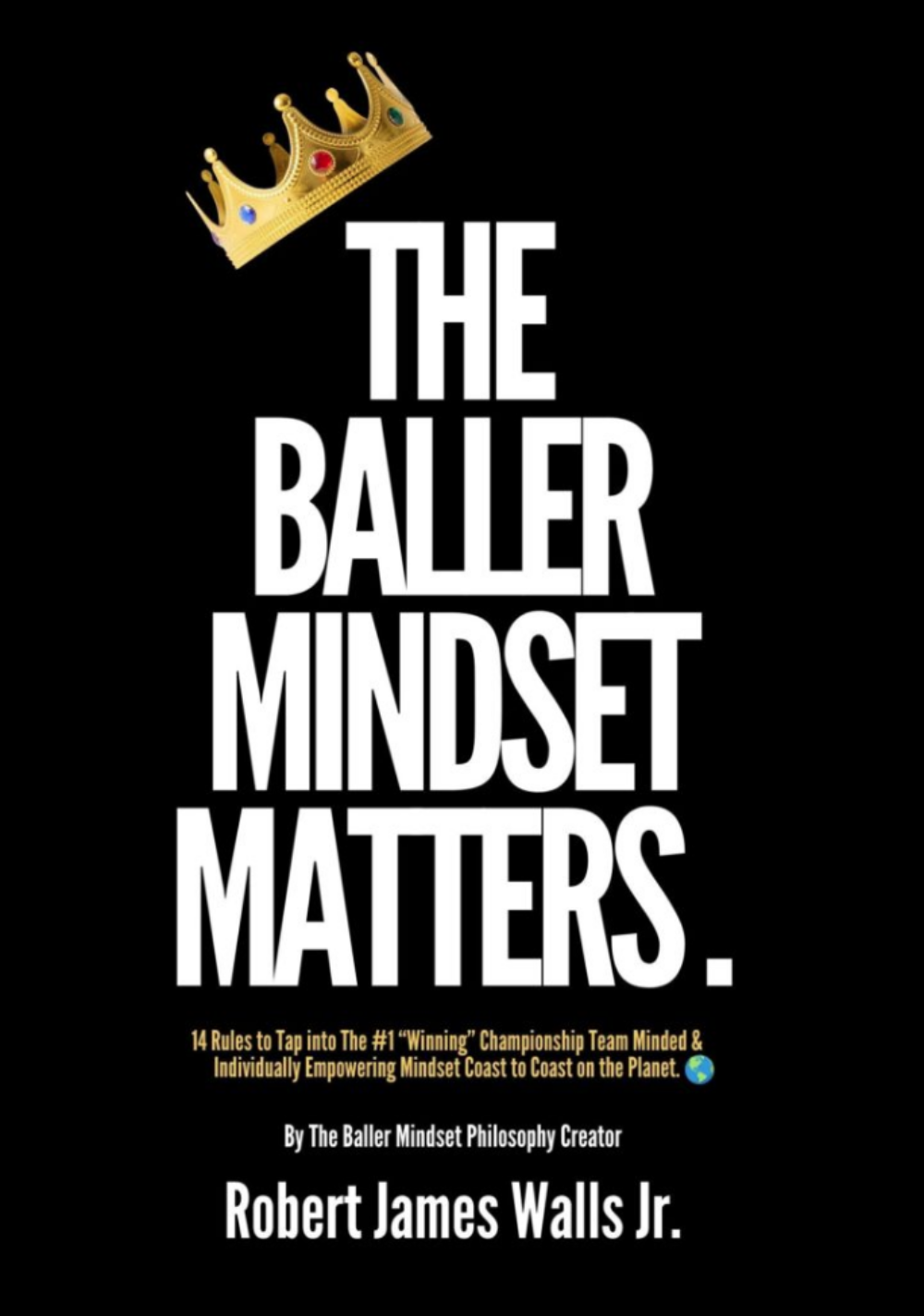Monthly Archives: March 2016
Fat Joe, Remy Ma – All The Way Up ft. French Montana, Infared
Total Views 1,139,023
9 Success Habits of Wealthy People That Cost Nothing
Have you ever you wondered how certain people have gotten so successful? Sure you have. A great idea, motivation, persistence, and a little luck helps, but most successful people share certain habits. Here are nine habits that have helped place them on the top:
1. They meditate.
Ray Dalio, the founder of Bridgewater Associates, told The Huffington Post in 2013 that “Meditation, more than anything in my life was the biggest ingredient of whatever success I’ve had.” Dalio, however, is not alone. Oprah, Rupert Murdoch, Russell Simmons, Arianna Huffington, Bill Ford and Padmasree Warrior have all attributed mediation as a huge component to their success.
Taking care of your body and mind by relaxing, exercising, healthy eating and getting enough sleep are all ways to improve your chances of success.
Related: Meditation Isn’t Just For Hippies: Here is How it Can Help Entrepreneurs
2. They wake up early.
President Obama, Richard Branson, Jack Dorsey, Larry Schultz, Tim Cook and Xerox CEO Ursula Burns are known to be early risers. How has this attributed to their success? Because early risers are able to start their days ahead of everyone else by responding to others, exercising and finding some personal time, early risers also tend to be happier and are more proactive.
3. They network.
Successful people realize the importance of networking. In fact, research has found that networking can lead to people performing better at work and increases the chance of landing a job. Networking helps our successful people be more innovative. According to Dale Carnegie’s classic “How To Win Friends & influence People,” successful people rarely complain or criticize. They are sincere and try to be empathetic.
4. Keep themselves busy.
Successful people are rarely idle. Achievers like LBJ and Robert Moses were known to work 60-65 hours per work. Elon Musk works a whooping 80-100 hours per week and has said, “That’s the type of work ethic an entrepreneur needs to have.”
5. They know when to say “no.”
“The difference between successful people and really successful people is that really successful people say no to almost everything.” – Warren Buffett
Successful people realize that by saying “no” to negativity, extra work and activities that waste time, they can focus on increasing their productivity. If they say “yes” to everyone or everything, they’ll be too distracted and will not accomplish tasks that have to be done.
Related: Why ‘No’ is the Most Important Word You’ll Ever Say
6. They don’t watch TV, they read.
According to Thomas Corley, author of “Rich Habits: The Daily Success Habits Of Wealthy Individuals,” 67 percent of rich people only watch TV for one hour or less per day. Corley also found only 6 percent of the wealthy watch reality shows, while 78 percent of the poor do.
Additionally, 86 percent of the wealthy love to read with an impressive 88 percent claiming that they read for self-improvement for 30 minutes or more per day.
7. They write to-do lists the night before.
Successful people are known for writing their to-do-lists the night before so that they are able to set priorities for the following day. They number their lists as well to identify which tasks are the most important.
8. They set goals and visualize.
Joel Brown interviewed a number of high achievers for Entrepreneur and found that “Ninety-five percent of the successful achievers I have interviewed practice writing down their goals, plans, or visions for success on a regular basis.” Successful people do this the night before, or first thing in the morning so that they are prepared to tackle the challenges that await them.”
9. They manage their money.
Successful people have gotten where they are because they were able to manage their finances well. This means that they invest their money wisely, look for new opportunities and set aside emergency funds. They are more generous and willing to donate to those who need help. Here are 101 ways that I’ve put together to save money like well-off people. In addition, I’ve found that my marriage has become 10x better with enough savings in the bank for a year of expenses. That saved us when my last business venture failed.
There is an old saying that luck and preparation always meet opportunity. The most successful people set themselves up for success by preparing all the time. Successful people expect luck will find them, and it usually does.
Pee Wee Kirkland on Being Basketball Star While Running Drug Empire
Total Views 166,822
2 Day Coast to Coast Ballers Basketball Division BBall Event Coming Soon in Washington the Baller Gang Washington takeover is in Motion
N.O.R.E. – Michael Jordan is a Hater of Hip Hop
Total Views 17,667
You don’t start a business you ARE a Business
Rihanna – Work (Explicit) ft. Drake
Total Views 161,339,117
Nike Air Max 90 Ultra Superfly
Traits of a Genius Genius Trait #3 – Devotion to Goals
Total views 32,828
Iggy Azalea Is Topless In Schön! Magazine
Jimmy Kimmel Enlists DJ Khaled as His Snapchat Coach
317,688
Hey, Kids. Want to Be Smarter and Friendlier? Play More Video Games. Maybe.
You might want to sit down for this, my fellow parental units: New research suggests that gaming for a few hours a week helps kids be better problem-solvers, in class and on the playground.
I know, I know. I really don’t want to hear this either. My teen and tween sure do, though. They’re both beyond addicted to Xbox (and both currently grounded from it, too, but that’s a different story).
Back to why playing video games might not be the devil after all. The results of a study published recently in the journal Social Psychiatry and Psychiatric Epidemiology suggest that children who game for five or more hours per week fare better in school than their peers who don’t.
Cue the collective jubilation of young gamers everywhere.
Per the research, further detailed in a Columbia University publication earlier this month, “high” video game usage was linked to 1.75 times greater chance of “high intellectual functioning,” and 1.88 times the odds of “high overall school competence.”
Related: Taiwanese Parents Now Legally Required to Restrict Their Tech-Addicted Teens
The study also found that, likely due to the live, multiplayer social nature of many video games today, kids who gamed a lot were more socially engaged overall. They also reported fewer relationship problems than peers who played less or didn’t play at all. Perhaps this because an increasing number of video games encourage players to work together toward a common goal.
The findings might come as a surprise to many, particularly when weighed against earlier research that points to the opposite, not to mention the general sentiment that video games hamper children’s ability to focus on less attention-hogging tasks. On the other hand, they might be surprising if you’ve gotten wind of other similar recent studies that connect gaming and good grades.
In this particular study, however, 13 researchers from the School Children Mental Health Europe project went a step beyond surface academic and social-emotional correlations. Drawing off of data supplied by parents and teachers of about 3,000 child subjects (ages 6 to 11) in six European Union countries, they concluded that children who game often during the week not only had an edge academically and socially, but also generally “suffered no emotional or mental health problems,” according to the Games and Learning Publishing Council publication GamesAndLearning.org.
Related: How to make a career in the Gaming Industry
“I think what we’re seeing here is the evolution of gaming in modern society. Video games are now a part of a normal childhood,” participating researcher and Columbia professor Katherine Keyes told U.S. News & World Report. “It’s no longer that kids who play a lot video games are the isolated, techy, brainy kids. What we’re seeing here is that kids who play a lot of video games are socially integrated, they’re prosocial, they have good school functioning and we don’t see any association with adverse mental health outcomes.”
Keyes also noted that parents shouldn’t take the study’s findings as a green light to let their kids game their hearts out. “We caution against over-interpretation, however, as setting limits on screen usage remains an important component of parental responsibility as an overall strategy for student success,” she said in a statement detailing the study’s findings.
In conclusion, Keyes and her fellow researchers assert: “Playing video games may have positive effects on young children.” They were, however, careful to point out that more analysis on the topic is needed.
No emotional problems as a result of hours of gaming? Hmm, interesting, I say, as I routinely witness my obsessive young gamers (and their many friends) forgo food, family outings and even trips to the bathroom in their endless pursuit to shoot and kill anything that moves in Call of Duty or Tom Clancy’s Rainbow Six Siege. They would also game nonstop over completing homework and hanging out with their friends in-person, if I allowed them to. But these are just one frustrated mother’s anecdotal observations. What do I know anyway?
Related: How Playing Video Games Made Me a Better Entrepreneur
Perhaps no parent or teacher who participated in the study dared to admit on paper that the child they answered questions about is so hooked on video games that he literally begs and screams for the controllers back when it’s time to quit playing. Wait, it’s probably just my kids who do that. If you see them, please tell them dinner is getting cold and I miss them.
Star Wars Battlefront – Outer Rim Gameplay Trailer
Total Views 732,048
7 Weird Social Media Marketing Habits All Marketers Need to Break NOW
We all have bad habits. Whether it’s biting our nails, constantly driving like we’re on a racetrack or something you’d rather not admit to, we’ve all got them. Some are easy to break while others quickly find their way back into our lives. The same can be said for social media marketing habits. Once you get in a routine, it can be hard to break habits that are helping, but may possibly be hurting your brand.
Within social media marketing there is a lot of opportunity for brands to create great experiences for their communities, create brand affinity and influence purchasing decisions. A recent study found that 84% of CEOs and VPs say that they use social media to make purchasing decisions.
If you want to be one of those companies that has a positive impact on your community and generates tremendous value for your brand, make sure you’re not following ANY of these 7 weird social media marketing habits.
7 Weird Social Media Marketing Habits to Break NOW
#1 – Automating EVERYTHING
When you sit down and look at the mountain of tasks in front of you each day it can be tempting to try and automate as many of your social media marketing tasks as possible. While many social media tools can be a marketer’s best friend, it’s best to use them in moderation.
Depending on the tools that you use to publish on social media platforms, you’ll find that there are often issues with the ways that images or messages post on different platforms. That means you’re not creating the best possible user experience for your followers. Plus, taking a short amount of time to customize your message depending on where you’re publishing can vastly improve the user experience.
#2 – Jumping on the WRONG Bandwagons
The concept of newsjacking is not new to marketing. When done appropriate, it can be an incredibly effective means of extending your reach to an already engaged audience. So, instead of having to create demand and seek out an audience, you have a group of people already discussing the topic at a large scale.
However, we’ve all seen what happens when companies try and jump on the wrong bandwagon. This happens most on Twitter that is constantly trending a series of hashtags about a variety of topics. Before trying to incorporate one of these trending items into your brand social media messaging, make sure that you have done the research to understand the source and meaning behind the topic.
The negative impact that many brands have experienced by not doing their homework has been significant, and easily avoidable.
#3 – Engaging Too INFREQUENTLY
This is another habit that is often the result of little time and attention paid to social media communities. There is simply no replacement for true human interaction on social media platforms. Your followers have the potential to be potential clients, current clients, influencers of decision makers, other savvy and credible professionals and yes, trolls.
If someone takes the time to follow and engage with your brand on social media then it is your responsibility to respond accordingly. Of course not every comment or share requires a response, but if you’re checking in on the heartbeat of your community frequently, then responding to those messages that do stand out can become a much more manageable task.
#4 – Focusing Only On YOURSELF
What do you think the purpose of social media is for brands? Is it solely to provide updates about everything happening at your company? Or, is it to help your followers solve their problems, open the door to conversations and provide helpful resources to begin building credibility?
I hope that the answer is obvious. If a brand is using social media platforms as a means to only push out content about the happenings at their company, they’re doing it wrong. Social media presents a unique and more personal opportunity to interact with your followers. Utilize this opportunity to the fullest by uncovering what your followers care about and providing them with insight on those items, and asking them enticing questions to gain their opinions as well.
#5 – ASSUMING All Audiences Are the Same
Sure, social media marketing would be easier if you could publish the same content on each platform and have it resonate with the audience on that platform. Unfortunately, we don’t have control over why and how people use each platform.
The type of message that resonates with your Facebook audience will likely not have the same impact with your Instagram followers. Take some time to analyze your audience for each platform (built-in social analytics make this very possible) and see what you can uncover about them. Then, create a plan for each individual platform that still maintains a similar message, but presented in a way that the audience for that platform will respond well to.
#6 – Ignoring the Importance of VISUALS
Everyone is busy and are often viewing content on social networks on the go. Additionally, the amount of content that brands are producing has become so overwhelming that it often numbs users. In order to stand out in a sea of content, it’s essential that you add visuals to your social media content.
A great mix of visual campaigns as well as great visuals to accompany links to content can be the difference between a user scrolling past your content entirely, and clicking to engage further. Each social media platform has their own specifications for social images shared in-stream, so make sure that you are optimizing these visuals for a better user experience.
#7 – PRETENDING Advertising Isn’t Important
Let’s face it, the increase in competition for consumer attention, and changes in algorithms on social networks has made social advertising an important part of a social media strategy. If you think that you can still organically reach 100% of your audience on social networks then you likely haven’t been looking at the data.
We are still fortunately in a situation where a little ad spend can still get you pretty good exposure. So don’t go dumping all of your marketing budget into social advertising, but do reserve a portion to boost posts that are important and ads that can have a big impact. Tools like Adsvise provide easy to understand specifications for different ad types (and in-stream visuals) for most social media platforms.
Let’s Face it, Today’s Customers Are SAVVY!
Shortcuts and weird habits that you used to be able to get away with have all gone down the drain as users have become more sophisticated and savvy in how they use social networks. There still exists a lot of opportunity to interact, you just have to be more sophisticated in how you approach social media marketing for business.
Which of these weird habits have you been guilty of committing?














